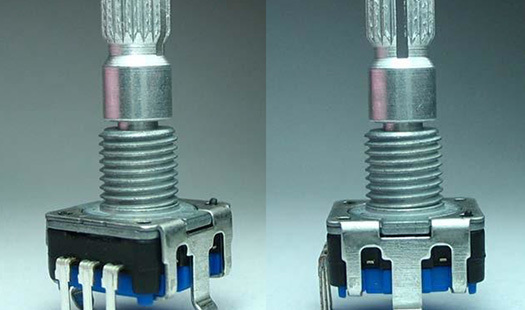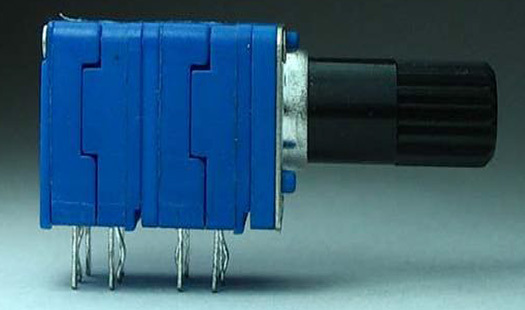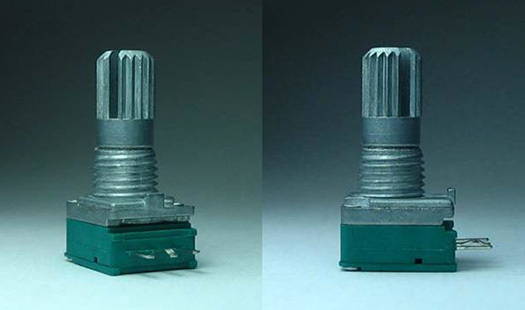The Science Behind Chinese Rocker Potentiometers: A Comprehensive Guide
Jun 13,2025
The Science Behind Chinese Rocker Potentiometers: A Comprehensive Guide
Table of Contents
1. Introduction to Rocker Potentiometers
2. Understanding the Basics of Potentiometers
3. The Unique Features of Chinese Rocker Potentiometers
4. Applications of Rocker Potentiometers in Various Industries
5. Advantages of Using Chinese Rocker Potentiometers
6. How to Choose the R
The Science Behind Chinese Rocker Potentiometers: A Comprehensive Guide
Table of Contents
- 1. Introduction to Rocker Potentiometers
- 2. Understanding the Basics of Potentiometers
- 3. The Unique Features of Chinese Rocker Potentiometers
- 4. Applications of Rocker Potentiometers in Various Industries
- 5. Advantages of Using Chinese Rocker Potentiometers
- 6. How to Choose the Right Rocker Potentiometer
- 7. Installation and Maintenance Tips for Rocker Potentiometers
- 8. Frequently Asked Questions (FAQs)
- 9. Conclusion
1. Introduction to Rocker Potentiometers
Rocker potentiometers are essential components in the realm of electronics, providing seamless control over various devices. Commonly used in everything from audio equipment to automotive dashboards, these components allow users to adjust levels, settings, or functionalities with ease. This article aims to elucidate the science behind Chinese rocker potentiometers, exploring their design, function, and significance in the modern technological landscape.
2. Understanding the Basics of Potentiometers
At their core, potentiometers are variable resistors that enable users to adjust voltage and current flow. They consist of three terminals: two fixed terminals connected to a resistive element and a movable wiper that slides along this element. By moving the wiper, users can alter the resistance in the circuit, thus controlling the output voltage.
The Role of Resistance in Potentiometers
Resistance is a critical factor in determining how effectively a potentiometer functions. Different resistance values can affect the sensitivity and range of adjustment. For instance, a potentiometer with a higher resistance will provide finer control at lower voltage levels, making it ideal for applications requiring precision.
Types of Potentiometers
Potentiometers can be classified into various types based on their design and application:
- **Linear Potentiometers**: The resistance changes uniformly across the movement of the wiper.
- **Logarithmic Potentiometers**: The resistance changes in a logarithmic manner, commonly used in audio applications for volume control.
- **Digital Potentiometers**: These utilize digital signals to adjust resistance, often found in modern electronic devices.
3. The Unique Features of Chinese Rocker Potentiometers
Chinese rocker potentiometers stand out in the market due to their robust construction, affordability, and versatility. These components are often manufactured using advanced techniques and materials, allowing them to perform reliably under various conditions.
Construction and Design
The design of rocker potentiometers typically includes a rocker switch interface that allows users to toggle settings with minimal effort. The housing is usually made from durable plastic or metal, providing protection against physical damage and environmental factors.
Performance Metrics
Chinese rocker potentiometers are known for their performance consistency. They often exhibit low noise levels, minimal wear over time, and excellent linearity, making them suitable for high-fidelity applications.
4. Applications of Rocker Potentiometers in Various Industries
Rocker potentiometers are utilized across multiple industries, reflecting their adaptability and functionality. Here are some key applications:
Consumer Electronics
In consumer electronics, rocker potentiometers are commonly used in audio equipment, remote controls, and home automation systems. They provide users with intuitive control over various settings, such as volume, balance, and playback modes.
Automotive Applications
In the automotive sector, rocker potentiometers are employed in dashboards to control features like air conditioning, stereo volume, and lighting. Their design ensures easy access and user-friendly operation.
Industrial Machinery
Industrial machinery often requires precise control over various operational parameters. Rocker potentiometers are used in these applications to adjust settings for speed, torque, and other critical factors.
5. Advantages of Using Chinese Rocker Potentiometers
Choosing Chinese rocker potentiometers offers several advantages that enhance their appeal to manufacturers and users alike.
Cost-Effectiveness
One of the primary benefits of Chinese rocker potentiometers is their affordability. Manufacturers can source these components at lower costs without sacrificing quality, making them an excellent choice for budget-conscious projects.
Reliability and Durability
Chinese rocker potentiometers are designed to withstand harsh environments. With robust materials and construction methods, they resist wear and tear, ensuring a long operational life.
Versatility
These potentiometers can be configured for various applications, from simple consumer devices to complex industrial machinery. Their adaptability makes them a favorite among engineers and designers.
6. How to Choose the Right Rocker Potentiometer
Selecting the appropriate rocker potentiometer for your application requires careful consideration of several factors.
Resistance Value
Determine the required resistance value based on your circuit specifications. This will ensure optimal performance.
Power Rating
Consider the power rating of the potentiometer to ensure it can handle the expected load without overheating or failing.
Form Factor
Evaluate the physical size and shape of the potentiometer to ensure it fits within your device’s design constraints.
7. Installation and Maintenance Tips for Rocker Potentiometers
Proper installation and maintenance of rocker potentiometers are crucial for achieving optimal performance and longevity.
Installation Guidelines
- Ensure correct orientation when mounting the potentiometer.
- Use appropriate tools to prevent damage during installation.
- Verify all connections are secure before powering on the device.
Maintenance Best Practices
- Regularly inspect the potentiometer for signs of wear or damage.
- Keep the area around the potentiometer clean to prevent dust and debris from affecting performance.
- Replace any faulty components promptly to avoid further issues.
8. Frequently Asked Questions (FAQs)
What is a rocker potentiometer used for?
Rocker potentiometers are used for variable control in various applications, allowing users to adjust settings such as volume, brightness, and speed.
How do I know if my rocker potentiometer is faulty?
Signs of a faulty rocker potentiometer include erratic behavior, no response to adjustments, or noticeable wear on the switch mechanism.
Can I use a rocker potentiometer in outdoor applications?
Yes, provided that it is rated for outdoor use and protected against environmental factors such as moisture and dust.
What is the typical lifespan of a rocker potentiometer?
The lifespan of a rocker potentiometer can vary, but quality units can last for tens of thousands of cycles, depending on usage conditions.
Are there different sizes of rocker potentiometers?
Yes, rocker potentiometers come in various sizes and configurations to suit different applications and design requirements.
9. Conclusion
In conclusion, **Chinese rocker potentiometers** play a pivotal role in the field of electronics, offering an effective means to control various functions in an array of devices. Their unique features, affordability, and versatility make them an excellent choice for engineers, manufacturers, and hobbyists alike. By understanding the science behind these components and their applications, you can make informed decisions for your projects, ensuring optimal performance and reliability. Embracing the advantages of rocker potentiometers can propel your electronic designs to new heights, fostering innovation and efficiency across industries.
More Information
More Information
RECOMMENDED










